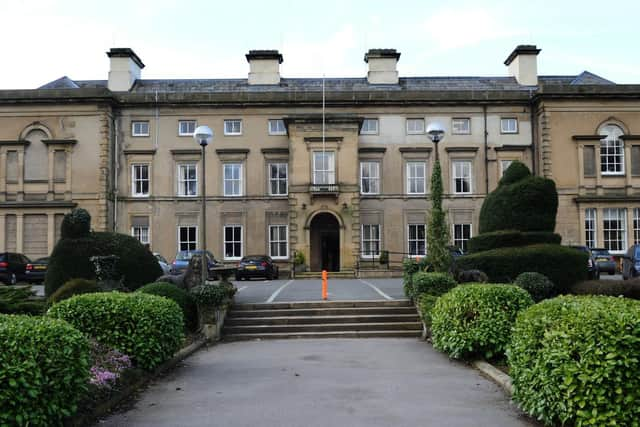Iron Age human remains found by builders working on former North Yorkshire Police headquarters
PGL children’s activity holidays, which bought North Yorkshire Police’s base at Grade II listed Newby Wiske Hall near Northallerton last year, has confirmed an archaeologist initially identified “a spread of bone and a human molar” during works to install drains beside the 17th century manor house.
After the remains were first spotted by builders on April 14, buried about a metre beneath concrete, all digging work to transform the hall into a centre for up to 550 children at a time stopped immediately.
Advertisement
Hide AdAdvertisement
Hide AdIt is understood the remains were discovered close to what had served as the North Yorkshire force’s canteen since 1976.


The area was cleaned by hand, partly revealing a human burial, before the an application was made to and issued by the Ministry of Justice to allow the exhumation of the body.
A PGL spokesman said: “Once the bones have been fully exhumed, the remains will be sent away for dating confirmation. However, the location and state of preservation suggest a possible prehistoric date for the remains – this may be confirmed by further study.”
A North Yorkshire Police spokesman said an officer had visited the site “as a formality”.
Advertisement
Hide AdAdvertisement
Hide AdHe said: “The remains are being treated as historic and a record of the find has been taken. But beyond this, it is not a police matter.”
John Buglass, an archaeologist who has previously studied the hall and its surrounding area, said the only accurate way to date the remains would be through carbon dating analysis, which could take several weeks to get a result.
While PGL agreed in principle to buy the property in 2017, the ambition has already been hit by numerous setbacks, mainly due to a concerted campaign by local residents, which has involved High Court action and Hambleton council planners considering the scheme twice.
Mr Buglass said his study of the parkland to the south of the hall had revealed faint growth marks in the grass which indicated a typical Iron Age agricultural system of small square fields, and that further south there were what appeared to be Iron Age enclosures.
Advertisement
Hide AdAdvertisement
Hide AdMr Buglass said: “It looks like it had a prehistoric landscape. That suggests, in my experience of dealing with prehistoric sites, that somewhere near where the remains have been found will be the remains of a roundhouse where somebody had an Iron Age farm.
“In the Iron Age typically they didn’t have big organised cemeteries, it was a very scattered dispersal and population. When Uncle Fred died you just buried him out the back.”
He said prehistoric settlements quite difficult to spot as they were made out of timber and wattle and daub with thatched roofs.
Mr Buglass said: “If it is a prehistoric burial that suggests there was some form of settlement very nearby, within a few hundred metres. It also pushes the history of Newby Wiske back 1,000 years as the first records of the village are Doomsday. What else lies beneath, that’s the question.”
